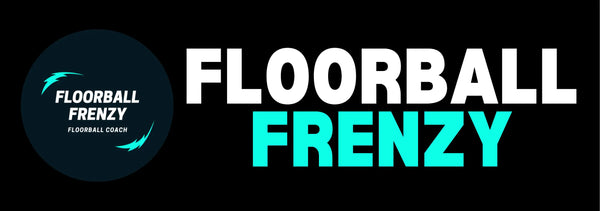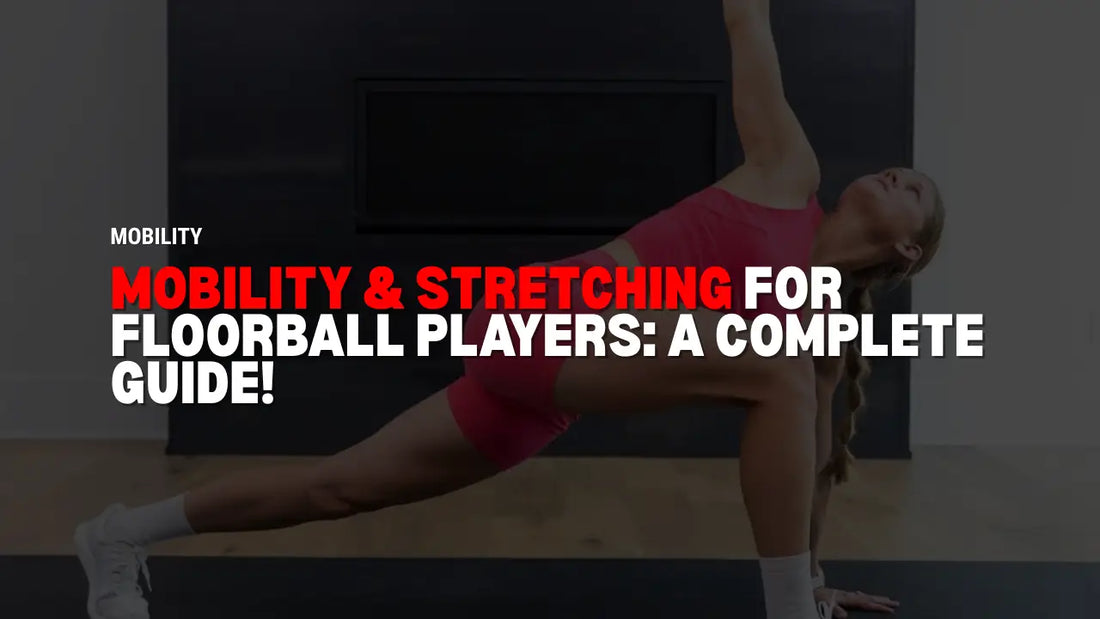Mobility for Floorball Players
It’s no secret — floorball players are tight.
It’s not just from the collisions, diving saves, or long tournaments — the constant crouched positions, quick pivots, and repetitive movements of floorball create dysfunction in the body. In fact, it’s rarely contact that causes pain and restriction — it’s the structural imbalances that develop over a season.
This article is written specifically to help floorball players undo this.
Creating a healthy and mobile body needs to be a top priority for floorball players who not only want to play better for longer — but also maximize their performance right now.
While most players know they should stretch more, the typical “couple lunges and a toe touch” isn’t nearly enough to undo the stress floorball puts on the body.
Enter mobility training.
These are the exercises floorball players can use to intentionally restore mobility and eliminate the restrictions that cause pain, poor mechanics, and performance drop-offs.
In this article, we’ll break down why mobility is so valuable, how it impacts your game, and show you exactly what to do to stay loose, strong, and healthy all season long.
Why Mobility Matters for Floorball Players
Floorball demands speed, agility, and explosiveness — but mobility is the foundation that allows all of those qualities to shine.
A healthy player is a better player.
Too many ambitious athletes focus all their energy on strength, conditioning, or technical drills — while ignoring the mobility that allows their body to move fluidly and efficiently. Without that, it’s like building a house on sand. Eventually it crumbles.
Pro floorball players get this. At the top levels, mobility work isn’t “extra” — it’s essential.
Mobility work:
- Reduces injuries & pain. Most groin strains, hip tweaks, or back tightness come from tight, restricted tissues. Release those restrictions, and you play freer.
- Maintains performance. A long season takes a toll. Players who keep their hips, shoulders, and ankles mobile stay quicker, smoother, and more powerful through the season.
- Extends careers. Whether you want to peak in your 20s or still play competitively into your 40s, mobility keeps your body functional and healthy.
And yes — improving mobility will make you a better floorball player. More hip mobility = deeper, stronger athletic stances. More ankle mobility = sharper cuts and quicker changes of direction. More shoulder mobility = freer stick-handling and shot mechanics.
Restrictions don’t just block movement — they force compensations. Tight hips can overload knees. Stiff ankles can strain the low back. One weak link ripples through your whole system.
Mobility is the key to smoother, stronger, pain-free performance.
Mobility vs Flexibility
A common mistake: thinking flexibility and mobility are the same.
- Flexibility = passive range of motion (e.g., can you touch your toes?).
- Mobility = active, controlled range of motion (e.g., can you squat low and stay strong?).
For athletes, mobility matters more. It’s not enough to “get into” a position — you need to control it while running, defending, or shooting.
That’s why we focus on active, dynamic stretches instead of just passive holds.
Static vs Dynamic Stretching for Floorball
Should floorball players stretch statically? Yes — but at the right time.
- Dynamic stretches = best before practices, workouts, or games. They warm up the muscles, activate joints, and prep the body for movement.
- Static stretches = best after. Long holds relax tight tissues, release tension, and help restore range.
For mobility sessions, the best mix is:
- Start with dynamic drills to activate.
- Finish with longer static holds to cement the new range.
Mobility Exercises for Floorball Players
Now let’s get practical.
Here are the top mobility drills — broken down by area — that every floorball player should be doing regularly.
Ankle Mobility
Ankles are the foundation of agility. Stiff ankles = poor balance, weak cuts, and more knee stress.
Drill 1: Ankle Gliders
Drive your knee forward over your toes, keeping the heel down. Push into the end range, then release. 8–10 reps per side.
Drill 2: Toes-Elevated Ankle Gliders
With toes raised on a step or foam roller, push the knee forward again. This creates more range and restores fluid ankle motion.
Hip Mobility
Hips are the #1 problem area for floorball players. Hours of crouching, defending low, and lunging put massive strain on hip flexors and adductors.
Drill 1: Couch Stretch
Kneel with your back foot elevated, squeeze glutes, and push hips forward. This opens hip flexors and quads.
Drill 2: 90/90 Position & Flows
Sit with one leg in front at 90° and the other behind at 90°. Hold, then flow slowly between positions to train rotation.
Drill 3: Fire Hydrant to Pigeon
Start with a fire hydrant lift, then sweep into pigeon stretch. Great dynamic opener for glutes and hips.
Drill 4: Iso Squat Hold
Sit deep in a bodyweight squat and hold. Releases ankles, hips, and low back all at once.
Back Mobility
The constant hunched posture in floorball locks up both the upper and lower back.
Drill 1: Scorpion Stretch
Lie face down, kick one leg across to the opposite side. Mobilizes low back rotation.
Drill 2: Book Openers
Side-lying, open your top arm like a book to rotate through the spine. Restores t-spine rotation.
Drill 3: T-Spine Extensions
On forearms or bench, arch the upper back into extension. Undo that “slouched” posture.
Drill 4: Banded Lat Stretch
Grab a high band, sink hips back, and breathe deep. Releases lats and side body tension.
Shoulder Mobility
Rounded shoulders and stick-handling posture make floorball players prone to tightness.
Drill 1: Shoulder Dislocators
Using a band or stick, circle arms overhead and back. Opens chest and shoulders.
Drill 2: Shoulder Extensions
With stick or band behind back, lift arms up while keeping chest tall. Restores extension range.
Drill 3: Trap Raise to Swimmer Hold
Lie prone, lift arms into “swimmer” positions. Builds active mobility and control.
Wrapping It Up
Mobility isn’t optional for floorball players.
It’s the hidden key to moving better, preventing injuries, and unlocking speed, power, and smoothness on the court.
Start with 5–15 minutes at the end of practice, workouts, or even while watching TV. The consistency pays off.
Get serious about mobility, and you’ll feel — and play — the difference.
Want to fast-track your progress?
When you grab any product from FloorballFrenzy.com, you’ll also unlock:
- BONUS: Mobility & Stretching Guide for Floorball – packed with routines you can use right away.
- BONUS #2: Travel Workouts for Floorball Players – stay fit and game-ready wherever you are.
- BONUS #3: Game-Day Nutrition Blueprint – fuel your body to perform at its best.
These extras were built to complement what you’ve just read — so you don’t just understand mobility, you actually master it.

